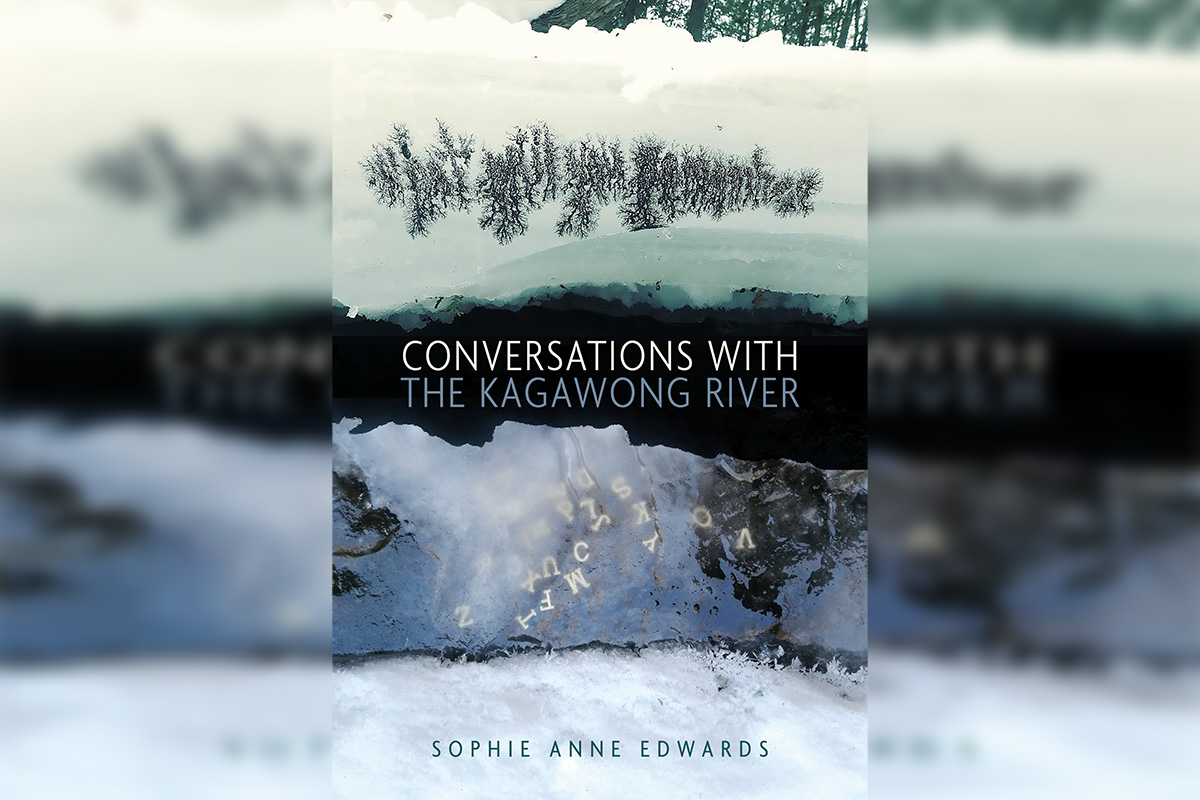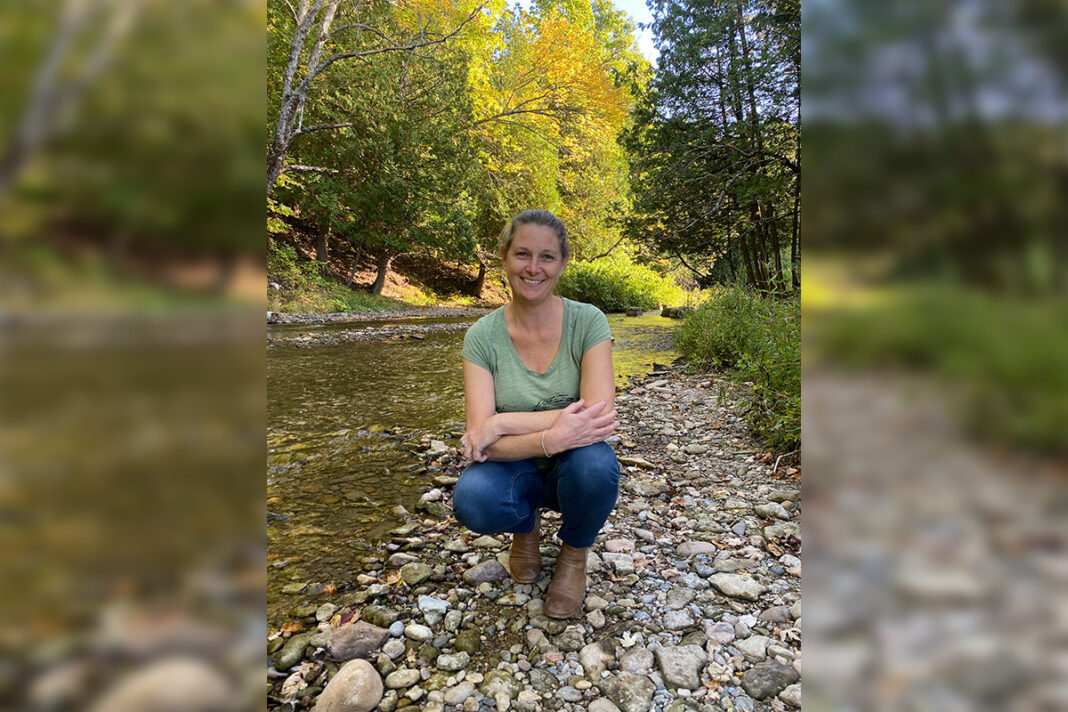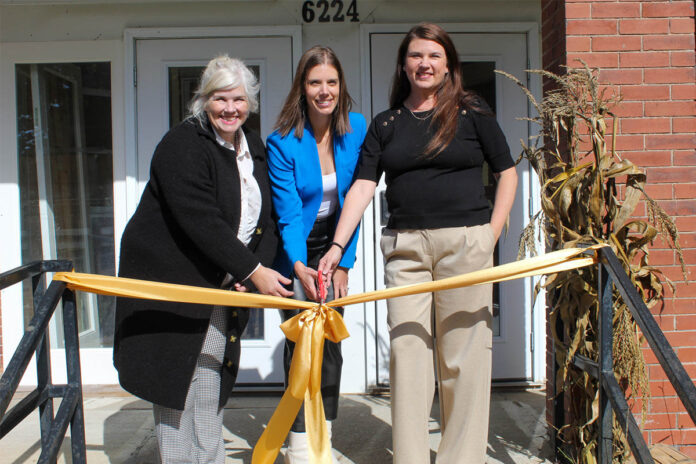KAGAWONG—‘Conversations with the Kagawong River’ by Sophie Anne Edwards is poetry, truly “visual poetry,” and it is also art, language, history, geography, biology, flora, fauna, climate and more.
‘Conversations with the Kagawong River’ is Sophie’s observations, history and interaction with the Kagawong River, the Gaagigewang Ziibi, over several years. Talonbooks, the publisher, describes it as “a site-specific engagement with an ecosystem of Mnidoo Mnising (Manitoulin Island).” This description captures its essence but does not do justice to its broad-based appeal. I believe it should and will be enjoyed by anyone who loves this Island, this Mnising, and its land and waters, its flora and fauna, its seasons, and its history.
‘Conversations with the Kagawong River’ has been listed by both CBC Books and Quill & Quire magazine’s as one of the most anticipated poetry titles of fall 2024.
It has also been widely anticipated by friends and colleagues of Sophie on Mnidoo Mnising. We have eagerly awaited descriptions of her encounters with the river, knowing she was physically diving, trudging, wandering, climbing, and paddling in the ziibi. If anyone could converse with a river it would be Sophie Anne Edwards. We welcome her embracing Anishinaabemowin in her conversations with the Gaagigewang Ziibi.

Introductory statements are provided by Dr. Alan Ojiig Corbiere, Art Jacko and Ojibwe Elder Josh Eshkawkogan. In Dr. Corbiere’s words: “Sometimes creativity and art reach places where words – particularly English ones – can’t.”
I worked with Sophie on the Billings Connections Trail, the Gaagigewang Historical Plaques, resulting in historical plaques and art being placed throughout Billings Township. Sophie was determined the plaques would recognize the long relationship of the Anishinaabeg with the area and insisted on accurate translations of the information into Anishinaabemowin. Translations were made by a language team from M’Chigeeng First Nation, led by Dr. Alan Ojiig Corbiere and included Josh Eshkawkogan, Clarice Pangowish and Clarence Pangowish. Sophie, almost magically assembled facts, photographs, art into an informative series of plaques with the goal of reconciliation, and recognition of the earliest residents. These translations are reproduced in ‘Conversations with the Kagawong River’ as poetry.
Clearly Sophie sees beyond written words, beyond facts, beyond language into a truly creative space. I see facts as black and white clues, while Sophie sees facts in vibrant colours waiting to be placed on a page. Thus, the reader sees facts in a new way. A 19th century statement is not just history but a powerful event. A river is not just a river, not just a ziibi, but a living, breathing, still or flowing, life giving force.
Throughout her book Sophie has ingeniously blended Anishinaabemowin words. Without realizing it the reader learns or expands upon their Anishinaabemowin. Through poetry we become aware of the Anishinaabemowin word for raccoon/esban, beaver/mik, and much more.
Sophie describes including Anishinaabemowin as “an effort to loosen the grip of my colonizing language, settler claims.” I envision this book inspiring students of all ages and backgrounds. For Anishinaabemowin students and speakers the longer translations of ziibi encounters will be appreciated.
Sophie’s visual poetry takes facts, arranges them creatively, and makes the most powerful, thought-provoking images possible. Images and their words that remain in your thoughts long after you have closed the book. Sophie incorporates facts about the 1862 treaty that I and others found in archives and creates powerful visual statements.
If you only read the first 50 pages you will have a deeper understanding of Mnidoo Mnising. But I encourage you to read on, whether you think you like poetry or not. Continuing, you will share Sophie’s journey with the river as she dangles graphite from herself and branches and lets the wind and river draw. You will watch as she deconstructs texts and sees cardboard letters fade, photographs ink words on melting ice, and even allows the ziibi to capture her own image.
Conversations with Ed Burt remind us that settlers too have had long relationships with the river and region. Ed reminds us of times when stacks of hydro poles blocked access to the falls or when boulders were moved. He recalls fish spawning, beavers thriving and hog peanuts growing. Where else would you find hog peanuts in a book of poetry?
Some of the images I could happily hang over my desk: The tree bark mimicked with typeface letters and squiggles, or Day Fourteen Day Twenty’s typed alphabet letters on cotton hung from a branch frozen in ice.
Sophie continued engaging in conversation with cattails, lily pads, and wildlife on the river through the pandemic. Returning two years after beginning her conversation with the ziibi, her alphabet letters, and poems had vanished, as they should. In Sophie’s words:
“All the letters are gone now, decomposed, removed, or circulation.
I can find no other traces of the poems,
the letters, my tracks.
This is as it should be.
All that is left are the spaces where
language finds itself.”
The Gaagigewang Ziibi ecosystem speaks through poetry, through Sophie. Readers will be inspired to slow down, examine their environment, engage with nature, and maybe even learn a language. Perhaps inspired by this work we will all have conversations with a river, or a lake, or forest. True deep observant conversations where we observe and appreciate.
Conversations is published by Talonbooks and will be available at The Expositor office in Little Current.
by Shelly Pearen
Shelley Pearen is the author of ‘Four Voices The Great Manitoulin Island Treaty of 1862,’ and transcriber, translator and editor of The Wikwemikong Diarium (in 3 volumes 1844-1873).





